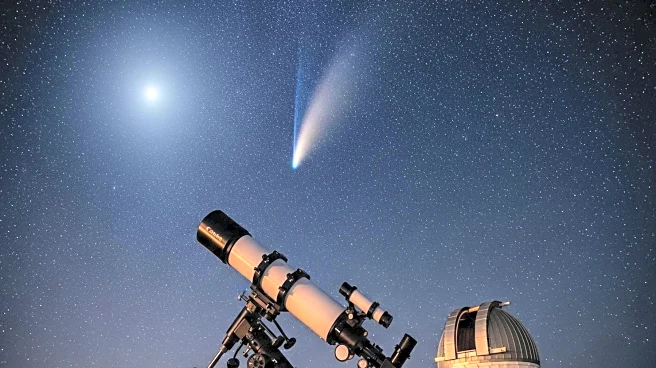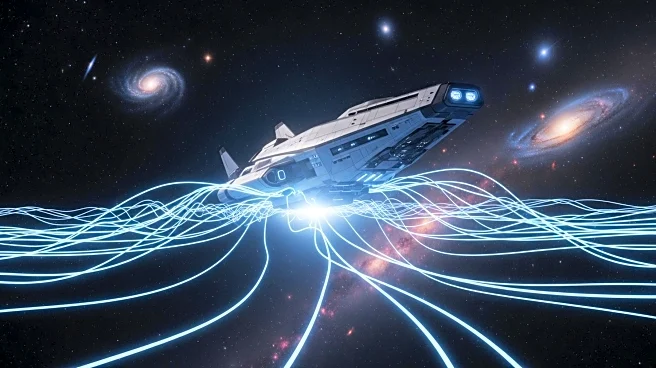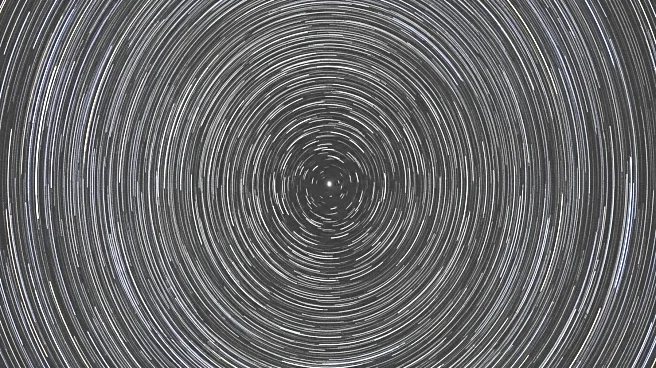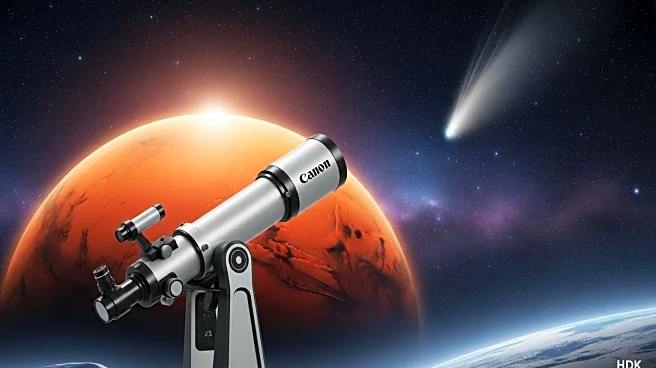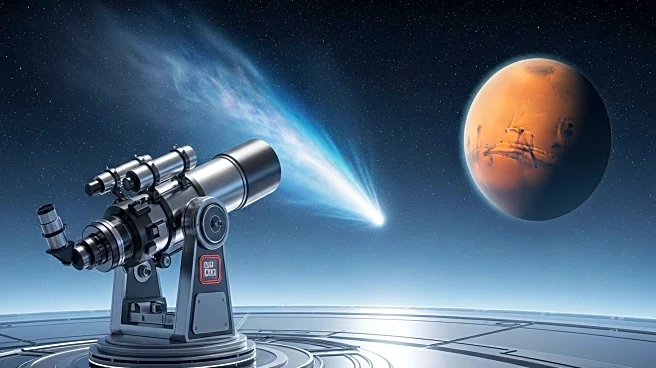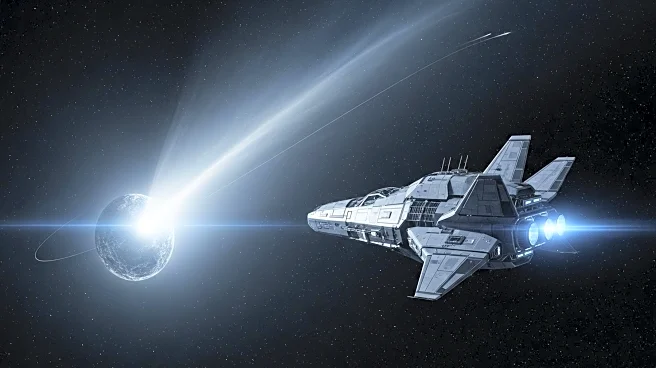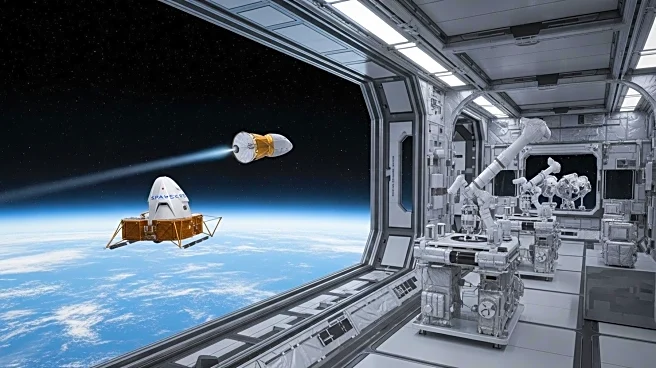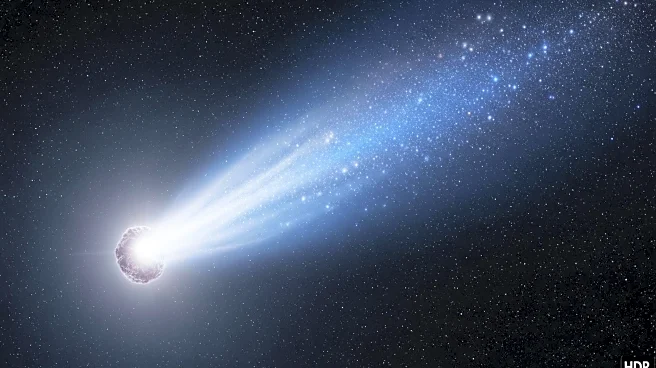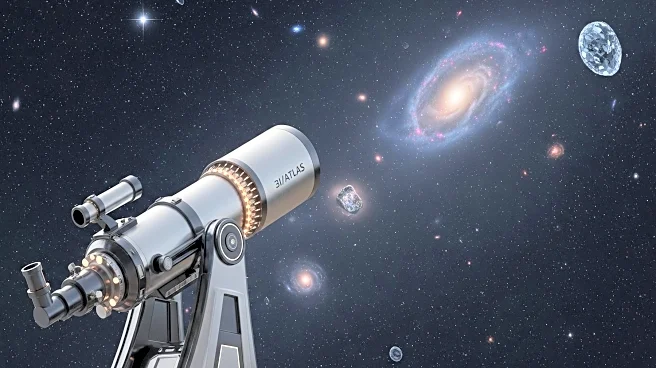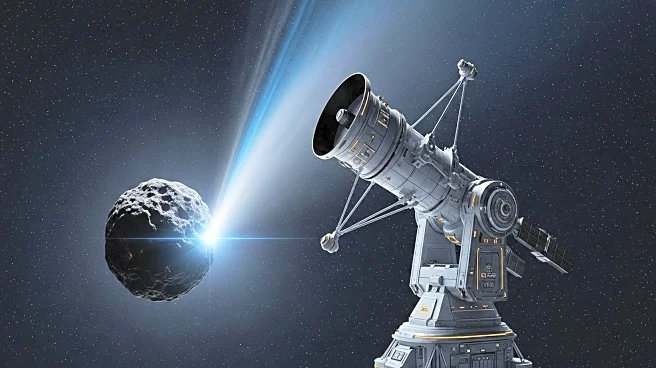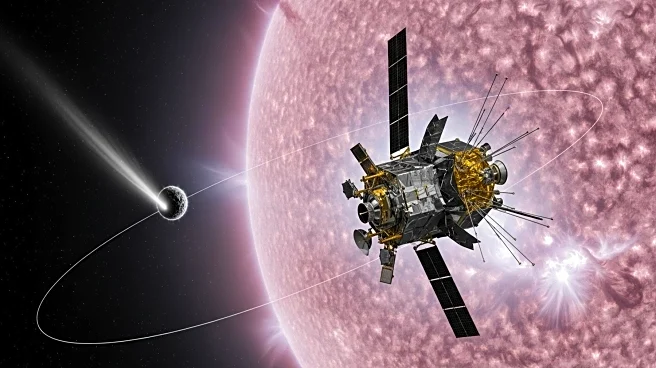What is the story about?
What's Happening?
Interstellar comet 3I/ATLAS has been observed by four powerful telescopes, including NASA's Hubble and JWST, revealing its unusual characteristics. The comet, which is on a trajectory towards the Sun, has a higher proportion of carbon dioxide in its atmosphere than typically seen in comets. This discovery suggests unique formation conditions or internal composition, providing a rare opportunity to study an interstellar object in detail.
Why It's Important?
The study of interstellar comets like 3I/ATLAS offers valuable insights into the conditions and materials present in other star systems. Understanding its composition and behavior can help scientists learn more about the processes that occur in different parts of the galaxy. This knowledge can contribute to our understanding of the solar system's formation and the potential for similar processes elsewhere in the universe.
What's Next?
As 3I/ATLAS approaches its closest point to the Sun, scientists are racing to gather as much data as possible before it becomes obscured. Future observations, potentially from Mars orbiters or the Juno spacecraft, could provide additional insights into the comet's characteristics and trajectory. These efforts will enhance our understanding of interstellar objects and their role in the broader cosmic environment.
AI Generated Content
Do you find this article useful?


